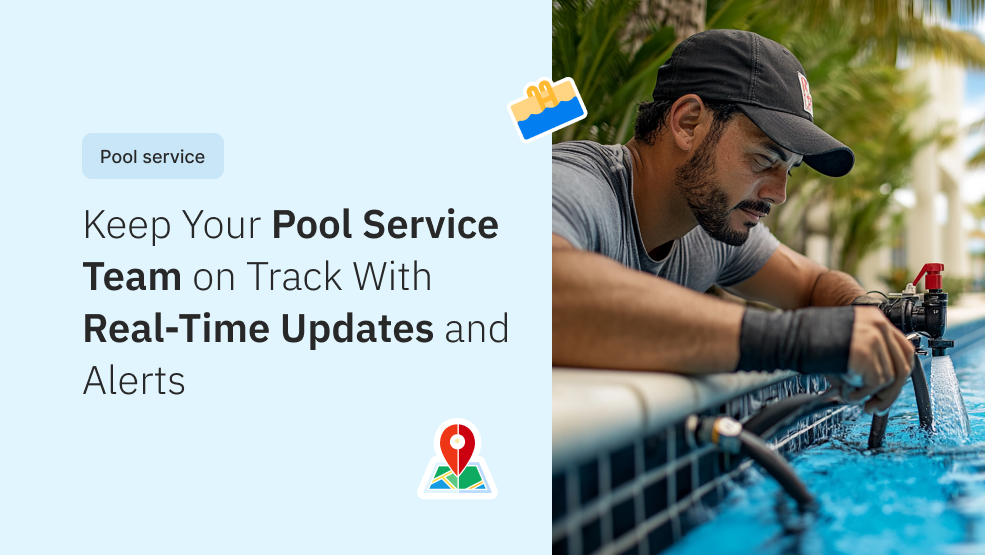The joy of home ownership is always accompanied by a nagging fear—the fear of budget-breaking maintenance. Just like our regular health check-ups, a home maintenance schedule is crucial for your house’s continued well-being.
From inspecting the exterior for cracks and leaks to ensuring your appliances and HVAC systems—maintaining a home can be a daunting task, but it doesn’t have to drain your finances. A comprehensive home maintenance schedule is the key to preventing breakdowns, saving money, and keeping your home looking its best.
Homeowners often find themselves pondering this question: How can I maintain my home without breaking the bank? In this article, we will unravel cost-effective tips for home maintenance and repairs. Let’s get started.
How much does home maintenance cost?
The cost of home maintenance can vary depending on factors such as the size of your home, its age, location, and specific maintenance needs. On average, homeowners can expect to spend approximately 1-3% of their home’s value on annual maintenance costs. For example, if your home is valued at $300,000, you might allocate around $3,000 to $9,000 per year for maintenance expenses.
It’s important to note that this estimate is a general guideline, and actual costs can vary. Some years may require more extensive repairs or upgrades, while others may have lower maintenance needs. Additionally, the level of DIY versus hiring professionals for maintenance tasks can also impact overall costs.
To better understand your home’s unique maintenance expenses, it can be helpful to create a budget and track your actual spending on repairs, routine maintenance, and necessary upgrades over time. This will give you a clearer picture of your specific home maintenance costs and enable you to plan and allocate funds accordingly.
How to Keep Your Home in Good Repair Without Breaking the Bank?
1. Get Up Close and Personal with Your House: Conducting a Comprehensive Home Inspection
Regularly inspecting your home is crucial for identifying and addressing potential issues before they turn into costly surprises. You don’t have to be a professional inspector; just stroll around. A DIY inspection could potentially save you thousands. When conducting the inspection, carefully examine the foundation, walls, and windows for cracks, leaks, or signs of damage. These issues can compromise the structural integrity of your home and lead to water intrusion or pest infestations.
Meanwhile, during the interior inspection, assess the walls, floors, and ceilings for any signs of water damage, structural problems, or pests. By conducting a thorough home inspection, you can catch problems early on and take proactive measures to address them effectively.
2. Make Caulk Your BFF: Sealant Secrets for Energy Efficiency and Water Damage Prevention
Caulking is a cheap and easy-to-use solution that helps improve energy efficiency and prevent water damage in your home. Caulk seals openings and prevents water from getting inside your home, where lingering moisture causes rot and mold. Additionally, calulk seals air leaks that can rob you of precious heating and cooling energy.
It’s essential to identify the areas that require caulking, such as windows, doors, and gaps, as these are familiar sources of air leaks and moisture intrusion. By choosing the right type of caulk for different surfaces and environmental conditions, you can ensure optimal performance and longevity. Proper caulking techniques, such as cleaning the surface before application and using smooth, continuous lines, will result in long-lasting seals that save you money on heating and cooling costs while protecting your home from water damage.
3. Give Your House a Facial: DIY Exterior Cleaning Tips
Regularly cleaning the exterior of your home not only enhances its curb appeal but also helps maintain its structural integrity. As you make your inspection rounds, look for blemishes—chipped or peeling paint, small chips in stucco, and missing mortar between masonry. A little spot repair prevents moisture from doing more damage. Pressure washing is an effective method to revive siding, decks, and driveways by removing dirt, grime, and mold. Window washing is another key aspect of exterior cleaning, as it maximizes natural light and improves the overall appearance of your home. Additionally, cleaning outdoor fixtures such as gutters, light fixtures, and patio furniture not only prolongs their lifespan but also ensures they function correctly.
4. Coddle Your HVAC: Cost-Effective Maintenance for Optimal Performance
Taking care of your HVAC system is essential for energy efficiency and long-term cost savings. Regularly changing air filters improves air quality and helps maintain the system’s efficiency. Clogged filters restrict airflow and force the HVAC system to work harder, resulting in higher energy consumption. Similarly, cleaning vents and ducts enhance airflow, reduces energy consumption, and prevent potential issues like blockages or mold growth. It’s also beneficial to schedule professional HVAC inspections and tune-ups to detect any problems early on and ensure the system operates optimally, saving you money on repairs and extending its lifespan.
5. Show Your Water Heater a Little TLC: Extending the Lifespan and Efficiency
Proper maintenance of your water heater can save you money by improving its performance and preventing costly repairs or replacements. Flushing the water heater regularly removes sediment buildup, which improves its efficiency and prevents corrosion. This process also helps the heater operate at its intended temperature, reducing wasted energy. By insulating the tank and pipes, you can minimize heat loss, helping to increase efficiency. It’s important to monitor temperature and pressure to ensure safe and efficient operation, preventing any potential hazards or inefficiencies.
6. Clean Your Gutters: A Crucial Step in Home Maintenance and Water Damage Prevention
Regular gutter cleaning is vital for preventing clogs, water overflow, and damage to your home. Clogged gutters can lead to water accumulation, which can seep into your home’s foundation, causing structural issues and water damage. Cleaning your gutters involves removing debris, leaves, and twigs that obstruct the flow of water. Cleaning your gutters yourself requires only a ladder, gloves, and a garden hose—saving you money on professional services. Additionally, installing gutter guards can minimize the frequency of gutter maintenance and enhance their functionality by keeping debris out, further protecting your home from potential water damage.
By implementing these money-saving tips for home maintenance and repairs, you can take proactive steps to keep your home in excellent condition while minimizing expenses. Regular inspections, proper sealing with caulk, DIY exterior cleaning, HVAC maintenance, water heater care, and gutter cleaning will help you avoid costly repairs, ensure energy efficiency, and maintain a safe and comfortable home environment.
7. Embrace DIY Repairs: Tackling Small Tasks on Your Own
Many home repairs can be successfully completed as DIY projects, saving you money on labor costs. Simple tasks such as replacing a light fixture, fixing a leaky faucet, or patching small holes in walls can often be done with essential tools and a little guidance from online tutorials or DIY books. However, it’s important to recognize your limits and understand when a repair requires professional expertise. Knowing when to call in a professional can prevent costly mistakes and ensure the job is done safely and effectively.
Home maintenance checklist
A comprehensive home maintenance checklist ensures that you cover all essential areas of your house. Here’s a checklist to guide you through your home maintenance tasks:
Exterior Maintenance
- Inspect the roof for any damaged or missing shingles.
- Clean gutters and downspouts to ensure proper water drainage.
- Check the exterior walls for cracks, peeling paint, or signs of damage.
- Trim trees and bushes away from the house to prevent damage and pests.
- Test outdoor lights and replace any burnt-out bulbs.
Interior Maintenance
- Check and clean air vents, ensuring proper airflow.
- Test smoke detectors and replace batteries if needed.
- Check for water leaks around faucets, toilets, and under sinks.
- Inspect windows and doors for drafts and reseal if necessary.
- Test and clean all electrical outlets and switches.
HVAC Maintenance
- Change air filters regularly to maintain clean air and efficient operation.
- Schedule professional HVAC maintenance to ensure optimal performance.
- Clean and dust vents and registers to improve airflow.
Plumbing Maintenance
- Inspect plumbing for leaks in pipes, faucets, and toilets.
- Check the water heater for signs of corrosion or malfunction.
- Flush the water heater to remove sediment buildup.
Appliance Maintenance
- Clean refrigerator coils and vents to improve efficiency.
- Check and clean dryer vents to prevent fire hazards.
- Clean range hood filters to maintain proper ventilation.
Safety and Security
- Test carbon monoxide detectors and replace batteries if needed.
- Check and test fire extinguishers.
- Inspect and maintain locks on doors and windows.
Seasonal Maintenance
- Clean and inspect the fireplace before winter use.
- Service and tune up the air conditioning system before summer.
Remember, it’s important to tailor the checklist to your specific home and needs. Regularly reviewing and completing these tasks will help maintain the value and functionality of your home while preventing potential issues from escalating into costly repairs.
Conclusion
Home maintenance is an essential aspect of being a homeowner. Regular maintenance will ensure your property remains in good condition and prevents costly repairs down the line. Regardless of your house’s size, dedicating a portion of your budget to routine upkeep is a wise investment.






